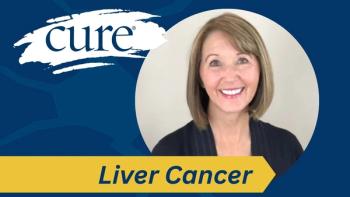
Cord Blood Transplantation Provides 'Donor for Every Patient'
In an interview with CURE, Filippo Milano, M.D., Ph.D., explains what cord blood transplantation is and why it is important for patients to learn more.
Because of new sources and methods, those in need of a blood marrow transplantation may be in luck, even if they don’t have a donor match, explained Filippo Milano, M.D., Ph.D.
In an interview with CURE, Milano, associate director of the Fred Hutch Cord Blood Transplant Program at Seattle Cancer Care Alliance, explained how cord blood is used for transplants and why patients should learn more about this viable treatment option.
CURE: What are cord blood transplants and how do they work to treat blood cancers?
Milano: Cord blood is used as an alternative source of
Can you tell us more about the cord blood transplant program at Seattle Cancer Care Alliance?
The
Which patient populations should know about this treatment option?
Every patient in need of an allogeneic transplant could take advantage of receiving cord blood as a source of stem cells. In particular, we reported that in patients with high-risk disease, such as the ones with minimal residual disease, pre-transplant cord blood transplant is associated with a lower risk of relapse when compared to transplant using matched and mismatched unrelated donors.
And what about this option should they know more about?
(The pros are that it is) readily available, less stringent for a human leukocyte antigen (HLA)-match so that we can find suitable cord blood units for 95 percent of patients, and it is associated with a lower risk for chronic graft-versus-host disease (GVHD) and, therefore, with better quality of life post-transplant.
(The cons are that there are a) low number of stem cells for adult patients, with need a of using two cord blood units or expansion technologies to increase the number of progenitors. (Also, there is) delayed neutrophil recovery and immune reconstitution that can lead to an increased risk of transplant related mortality, (and there is a) high-cost upfront for the acquisition of the graft.
How can patients learn more about blood cord transplantation?
The National Marrow Donor Program has a dedicated section related to the use of cord blood both for treatment of malignancy and non-malignancy diseases. Furthermore, many cord blood associations are trying to raise awareness on the importance of donating cord blood to public banks. Donating and storing what is usually considered medical waste is an important act of solidarity and can help save many lives of patients with hematological malignancies.
Why is it important for patients to know more about having options to treat their cancer?
Patients and their families (only) learn about cord blood transplantation as a last resource, when instead it is a very valid therapeutic option. Cord blood can provide a donor for every patient regardless of their ethnicity, and clinical outcomes are comparable to the ones using different sources of stem cells.




